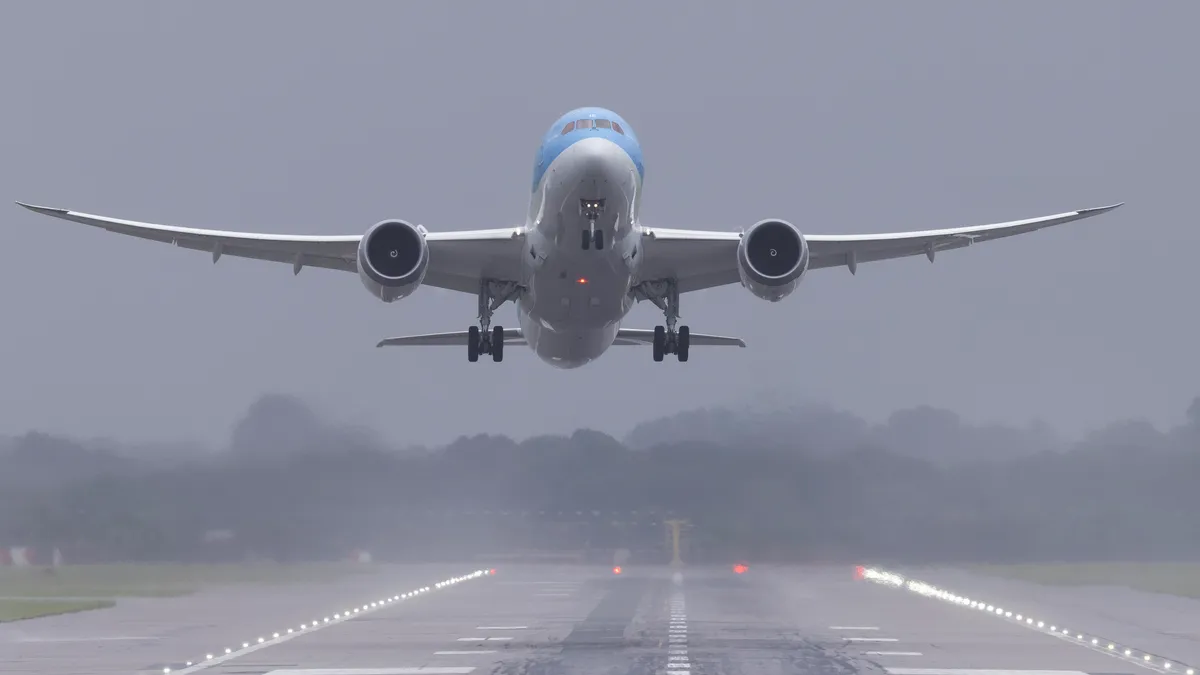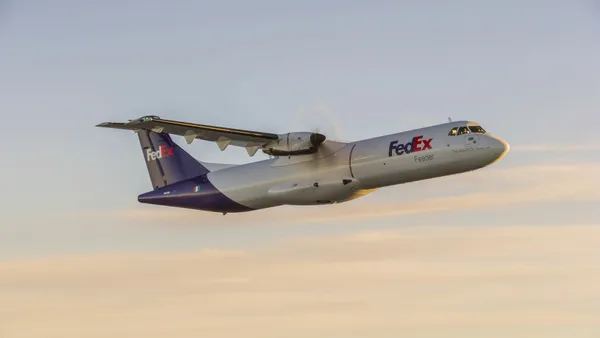Dive Brief:
- Transatlantic capacity is returning to the air cargo market as airlines ramp up their summer schedules to meet rebounding passenger demand, according to a June 1 news release from Clive Data Services.
- Load factors on the Europe-to-North America trade lane fell from 82% in March to 64% in May, per Clive's data. Capacity also freed up YoY, with the lane's load factor being 22 percentage points lower than in May 2021. Clive's "dynamic load factor" considers both weight and volume utilization.
- The global air cargo market remains hobbled by macroeconomic challenges such as the war in Ukraine and COVID-19 restrictions in China, according to Clive. May volumes fell 8% YoY, while rates increased 16%.
Dive Insight:
The added capacity across the Atlantic Ocean is a welcome relief for air cargo shippers. More flights have helped cool off Transatlantic airfreight rates that have been elevated since the COVID-19 pandemic cratered travel demand and reduced belly capacity on passenger airlines.
"In the last week of May 2022, rates from Europe to North America showed negative year-over-year growth for the first time in two years," according to Clive's news release.
U.S. passenger airlines signaled last year they would increase this summer's Transatlantic flight activity as COVID-19 travel restrictions eased. Executives have since touted high demand for flights between Europe and North America.
"People are being encouraged to move, they're going because there's been such a pent-up demand for that experience," Delta Air Lines CEO Ed Bastian said at Bernstein's 38th Annual Strategic Decisions Conference last week. "Europe this summer is on fire."
Business travel is also faring well, with United Airlines' corporate bookings across the Atlantic having largely returned to normal, Andrew Nocella, EVP and chief commercial officer of United Airlines, said on an April earnings call.
The Transatlantic rebound could be a preview of what's to come for other air cargo trade lanes as passenger demand returns, said Niall van de Wouw, founder of Clive and chief airfreight officer at Xeneta, in a statement.
Airfreight capacity to and from Asia remains strained. Long-haul connectivity from Asia to North America and Europe is at about one-third of pre-pandemic levels, according to a May report from the International Air Transport Association. Connectivity in the Americas and Europe, on the other hand, has reached at least 80% of pre-COVID-19 levels.
"It's understandably challenged because as long as there are entry restrictions, demand remains pretty stubborn to come back," said American Airlines Chief Commercial Officer Vasu Raja on an April earnings call, referring to Transpacific demand. "But like I said, we're encouraged that once those restrictions are lifted, the demand improves pretty meaningfully."
China's strict COVID-19 policies have been a major driver behind these capacity constraints. Airlines are gradually resuming flights at Shanghai Pudong International Airport as Shanghai emerges from its lockdown, with export volume set to build up quickly, according to a June update from Crane Worldwide Logistics.
"The market will become very dynamic in June," per Crane's update. "Tight space is expected, especially from the middle of June onwards."













